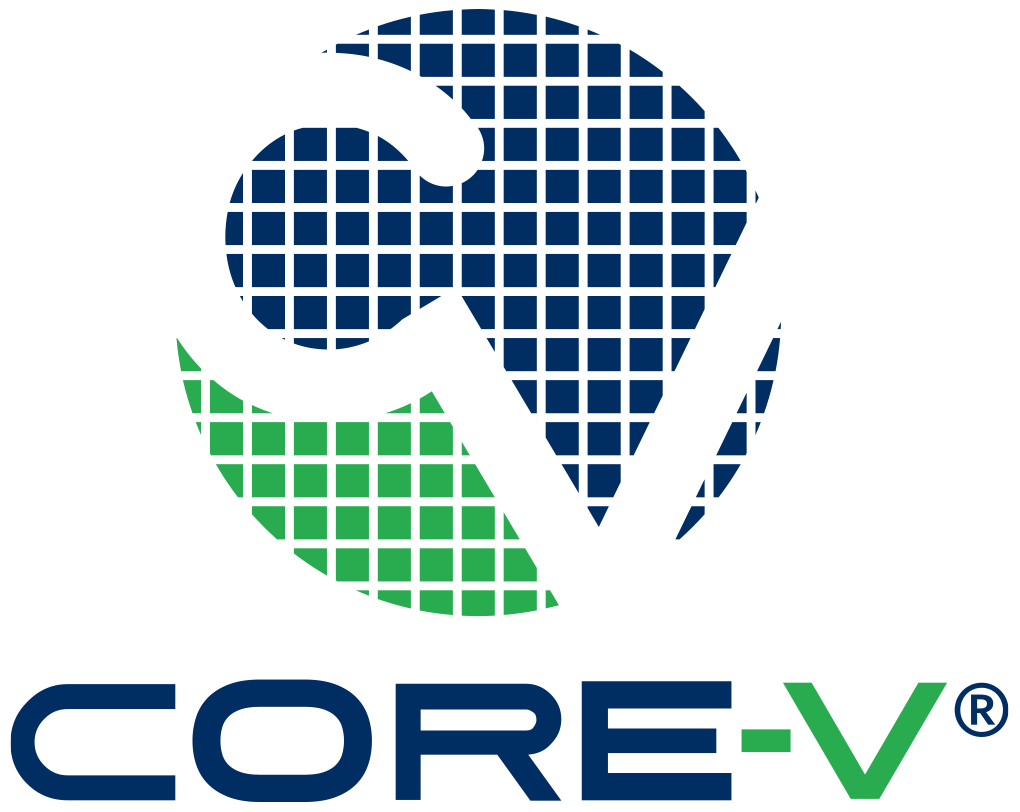core-v-sdk
 core-v-sdk copied to clipboard
core-v-sdk copied to clipboard


CORE-V-SDK Quick Start Guide
The purpose of this Quick Start Guide (QSG) is to get you up and running quickly with the CORE-V-SDK on one of the various supported operating system platforms. Currently supported OSs are Windows (10/11) and Linux (RH 7.9/8.4 & Ubuntu 18.04/20.04). Note: only the x86 architecture is supported (Arm is not supported).
Getting Started
Download the CORE-V SDK package (64-bit Windows /64-bit Linux)
Windows Installation
Run the supplied installer executable and follow the installation wizard to install CORE-V-SDK in the directory of your choice. Installation includes all the necessary toolchain components, and the default directory is:
C:\Users\[USER]\AppData\Local\OpenHW\CORE-V-SDKvX.Y.Z
where X.Y.Z is the version.
Linux Installation
CORE-V-SDK Linux installer is provided as a .run file. Add execution permission to the file using the command:
chmod +rwx CORE-V-SDK_SetupvX.Y.Z.run
Execute this .run file and follow the instructions.
$./CORE-V-SDKSetupvX.Y.Z.run
Installation includes all the necessary components, and the default directory is:
/home/username/OpenHW/CORE-V-SDKvX.Y.Z/
Import Sample Project
To import and run the sample cli-test project or qemu_32_example provided with the SDK
Step 1: Launch IDE
Launch the CORE-V-SDK by double clicking on the "CORE-V-SDK" shortcut in Windows or "CORE-V-SDK.launch" in Linux (from the installation location).

Step 2: From Welcome, Select Import

Step 3: Select OpenHW Sample Projects

Step 4: Select the Example Projects

Step 5: Compile Projects
Assuming everything above has completed this step is simplicity itself. With the corresponding project selected in the Project Explorer pane, click on Build (the hammer icon):

Step 6: Debug Configurations
Under the Run menu select Debug Configurations...

Step 7: Debug the Project
- Under
GDB OpenOCD Debuggingselectcli_test Ashling Opella-LDorcli_test hs2and thenDebug, or for QEMU: - Under
RISC-V QEMU Simulator Debuggingselectqemu_32_exampleand thenDebug
How to Import Existing Projects from Git

Step 1: Specify Clone URI

Step 2: Specify the Source Git Repository
Provide the full URL path to the repository. The path you provide will depend on the protocol used to access GitHub. For example, https://github.com/openhwgroup/core-v-mcu-cli-test.git is the path when using https.

Step 3: Select the Branch to Clone
Note: the list of branches will change over time.
The main branch is stable, but not necessarily the latest.
All other branches are development branches and may not be stable.

Step 4: Specify Directory for Git to use (use the default)

Step 5: Select Projects to Import

Terminal window
CORE-V-SDK includes a built in Terminal Window (useful to run cli test). To open,
Select Window -> Show View -> Other... -> search "Terminal"

Click on "Open a new Terminal View"

Select "Local Terminal"

CSR Register View
CORE-V-SDK supports a Debugger Register View support for CSR Registers.To see the register view,
Browse the register file from the given location
C:\Users\[USER]\AppData\Local\OpenHW\CORE-V-SDKvX.Y.Z\registers\csr\gdb_reg_riscv_rv32.xml

To open the view,
Select Window -> Show View -> Other... -> search "Registers"

Peripheral Register View
CORE-V-SDK supports a Debugger Register View for Peripheral Registers. To see the register view set the SVD path as shown below,
C:\Users\[USER]\AppData\Local\OpenHW\CORE-V-SDKvX.Y.Z\registers\peripheral\CORE-V-MCU-xsvd.svd

To open the view,
Select Window -> Show View -> Other... -> search "Peripherals"

FreeRTOS Task and Queue Views
CORE-V-SDK supports Debugger Task and Queue Views support for FreeRTOS projects.To see the views,
Go to the OS Awareness Tab, select "Enable OS Aware Debugging" and choose the "OS" and "Version"

To open the view,
Select Window -> Show View -> Other... -> search "FreeRTOS Task List"
or
Select Window -> Show View -> Other... -> search "FreeRTOS Queue List"
